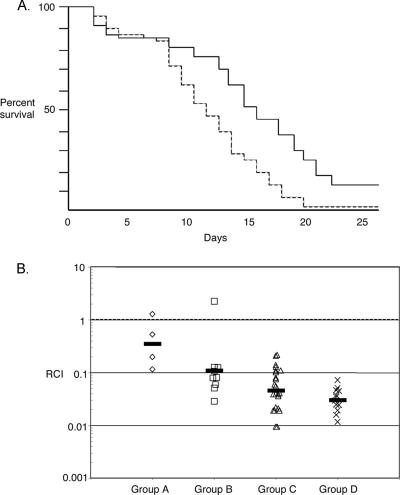FIG. 5.
Data from fish virulence experiments comparing the luxA mutant EN4 and its wild-type parent. (A) Survival plot for Atlantic salmon fry infected with either the luxA mutant EN4 (solid line) or the wild type (dashed line). Mortality among the fish infected with the mutant was significantly delayed compared to that among the fish infected with the wild type (log rank test, P = 0.0002; Wilcoxon test, P = 0.0015). Inputs were 9.7 × 107 and 1 × 108 CFU per fish for the mutant and the wild type, respectively. (B) Competition experiment with the luxA mutant EN4 and the wild type. Fish were grouped according to the duration of infection before death (A, 1 to 5 days; B, 6 to 10 days; C, 11 to 15 days; and D, 16 to 20 days). The relative competitive index (RCI) of the luxA mutant for each fish was determined by dividing the output ratio for the two strains (mutant cells to wild-type cells) in the head kidney of the dead fish by the input ratio in the mixed inoculum. An RCI of less than 1.0 indicates that the wild type outcompetes the mutant. Each symbol on the graph represents the RCI calculated for one fish, and the geometric mean for each group is indicated by a bar.

